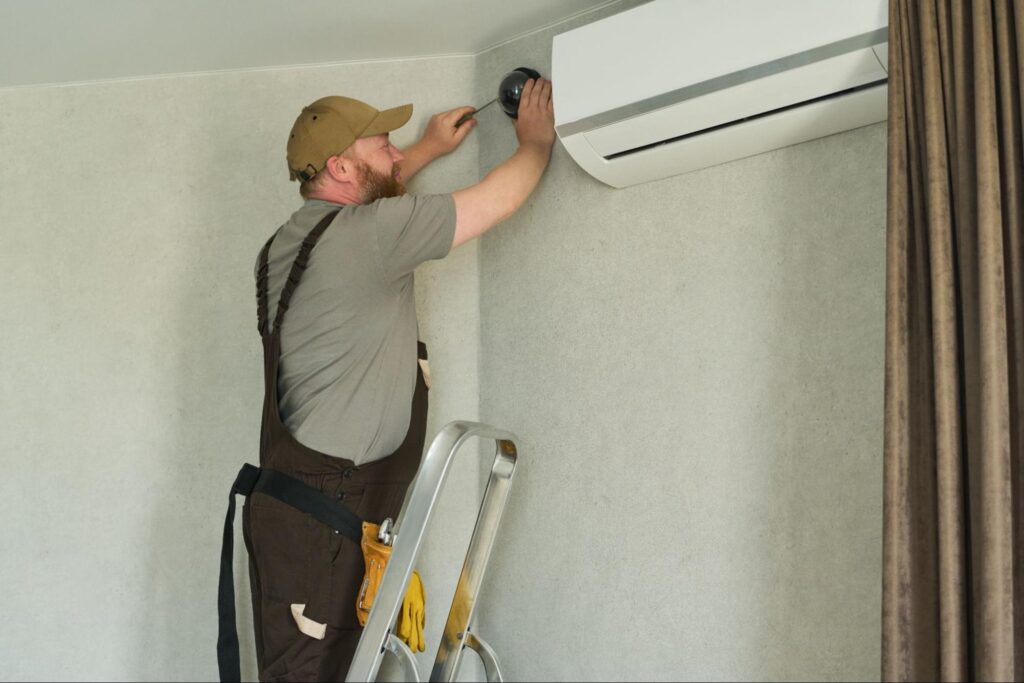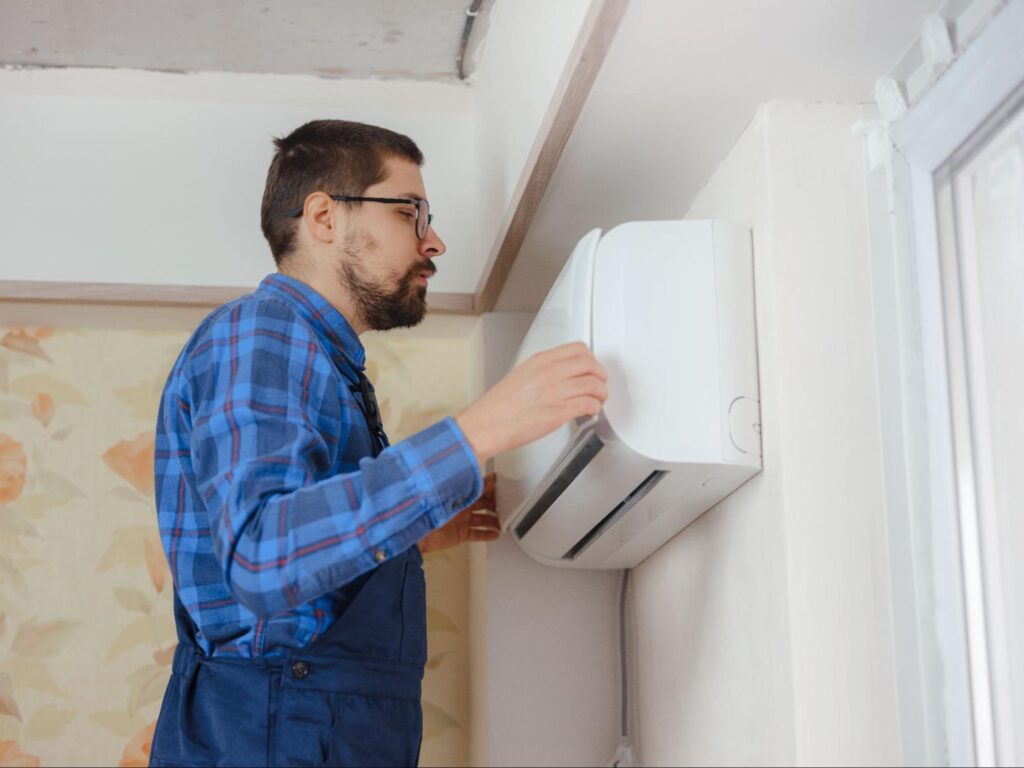Imagine slashing your heating bills by up to 60 percent while enjoying personalized comfort in every room of your St. Clair County home. Ductless mini split installation services deliver precisely that: a flexible, energy-efficient heat pump solution that adapts to existing layouts without ductwork. Yet homeowners often worry about hidden costs, installation disruptions, and long-term performance. S&P Heating’s certified HVAC technicians remove uncertainty through a structured process—spanning consultation and load calculation, expert mounting and refrigerant charging, rigorous testing, transparent pricing, and ongoing support. In this guide, you’ll discover exactly what happens during each stage of installation, how costs break down, the benefits of zoned heating and cooling, why professional expertise matters, how to choose the right system, how to prepare your home, and the maintenance required. Understanding these steps ensures a seamless experience and maximizes energy savings from your mini split investment.
What Happens During the Mini Split Installation Process?
Professional mini split installation comprises four core phases—from site assessment through performance verification—to ensure optimal comfort and system longevity. The process begins with a detailed home evaluation and ends with a hands-on homeowner walkthrough. Each step is designed to align load requirements, installation logistics, and safety standards under one cohesive plan.
How Does the Initial Consultation and Site Assessment Work?
The initial consultation lays the foundation for a tailored mini split solution by evaluating the home’s layout, insulation, window orientation, and occupancy patterns. During this phase, S&P Heating’s technicians measure square footage in each zone and inspect existing electrical capacity to recommend the appropriate BTU capacity and indoor unit locations. A load calculation—using ACCA Manual J principles—ensures each indoor air handler meets heating and cooling demands without oversizing. For example, a 1,200 ft² living room might require a 12,000 BTU air handler, while a bedroom needs only 9,000 BTU for consistent comfort.
What Are the Steps to Mount Indoor and Outdoor Units?
Mounting consists of positioning indoor air handlers on secure wall brackets and placing the outdoor condenser on a stable pad. Technicians first install a galvanized-steel mounting plate at pre-determined heights to allow proper airflow and drainage. Next, each air handler is leveled and bolted to the plate, with vibration-dampening feet reducing noise.
Outside, the outdoor condenser is positioned on a polymer pad or a wall-mounted bracket, at least six inches above snow levels and three feet from walls, to facilitate service access and optimal heat exchange.
How Are Refrigerant Lines, Electrical Wiring, and Drainage Installed?
Connecting indoor and outdoor units involves running insulated refrigerant lines, a condensate drain hose, and a dedicated electrical conduit through a single 2- to 3-inch hole. Technicians pull pre-insulated copper line sets for high-side and low-side refrigerant, adding nitrogen purge during brazing to prevent oxidation. A 24-volt communication cable and a 110/220-volt power cable are run in parallel within the same conduit, then sealed with fire-rated caulk to preserve insulation integrity. A PVC drain line slopes downward to carry condensate outdoors, ensuring uninterrupted drainage.
What Happens During System Testing and Post-Installation Walkthrough?
Once connections are complete, technicians evacuate the refrigerant circuit to a pressure below 500 microns, then release factory-charged refrigerant to achieve the exact charge levels. Safety and performance checks include verifying voltage, amperage, airflow, and superheat/subcooling values. After confirming operational parameters against manufacturer specifications, S&P Heating’s experts guide homeowners through remote controls, filter removal, and thermostat programming. This walkthrough ensures you understand system operation, filter-cleaning intervals, and warranty coverage before technicians depart.
How Much Does Mini Split Installation Cost in St. Clair County?
The cost of mini split installation varies based on the system type, the number of zones, labor rates, and any necessary electrical upgrades. Transparent pricing helps homeowners budget accurately and avoid unexpected fees.
What Factors Influence Mini Split Installation Costs?
Installation cost drivers include unit capacity, the number of indoor zones, the length of refrigerant line sets, the complexity of wall penetrations, and electrical panel upgrades. Permitting fees and local inspection costs also affect the total. Below is a concise breakdown:
| Item | Cost Component | Typical Range |
|---|---|---|
| Indoor Air Handler (per zone) | Unit price | $700 – $1,500 |
| Outdoor Condenser | Unit price | $1,200 – $2,500 |
| Refrigerant Line Set | Materials & labor | $200 – $400 per 15 ft |
| Electrical Circuit & Breaker | Labor and parts | $300 – $800 |
| Permit & Inspection | Local jurisdiction fees | $100 – $300 |
These elements combine to determine the baseline of your project. When multiple rooms share a single outdoor unit, line-set installation may become more intricate, potentially increasing labor hours.
What Are the Average Cost Ranges for Single-Zone and Multi-Zone Systems?
The costs for single-zone mini splits typically range from $2,000 to $4,500, while multi-zone installations (with two to four indoor units) range from $5,000 to $10,500. The following table illustrates typical turnkey pricing:
| System Type | Zones | Installed Price Range |
|---|---|---|
| Single-Zone | 1 indoor, 1 outdoor | $2,000 – $4,500 |
| Dual-Zone | 2 indoor, 1 outdoor | $3,500 – $6,000 |
| Triple-Zone | 3 indoor, 1 outdoor | $5,000 – $8,500 |
| Four-Zone | 4 indoor, 1 outdoor | $6,500 – $10,500 |
These figures reflect typical scenarios in St. Clair County, including labor, materials, and basic electrical work.
Are There Financing Options or Rebates Available?
Homeowners can offset upfront costs through financing plans and manufacturer or utility rebates. Many lenders offer zero-interest or low-interest financing for HVAC projects up to 10 years. Local energy providers and the Michigan Energy Office also provide rebates up to $500 per indoor unit when systems meet or exceed specified SEER2 and HSPF2 ratings. Combining rebates and financing reduces net investment while accelerating energy savings.
What Are the Key Benefits of Choosing a Ductless Mini Split System?
Ductless mini split systems deliver targeted climate control, reducing energy waste and enhancing comfort in specific zones. Their modular design offers flexibility that traditional ducted systems cannot match.
How Does a Mini Split Improve Energy Efficiency and Save Money?

A ductless mini split uses inverter-driven compressors and high-efficiency heat pump technology to match output precisely to demand. Seasonal Energy Efficiency Ratio (SEER2) ratings often exceed 20, while Heating Seasonal Performance Factor (HSPF2) values surpass 10. These metrics translate to 30–60 percent lower energy consumption compared to central furnaces or window units, resulting in rapid payback periods in heat-dominated climates.
What Comfort Advantages Do Zoned Heating and Cooling Provide?
Individual thermostatic control in each zone avoids overheating or overcooling unoccupied areas. Residents can set different temperatures for bedrooms, living spaces, and additions, ensuring that each room meets its unique comfort requirements. Zoned comfort eliminates common hot-cold spots and reduces the need to run multiple inefficient window units.
How Does a Mini Split Enhance Indoor Air Quality and Quiet Operation?
Ductless systems incorporate multi-stage filters and optional UV-C lamps to reduce dust, pollen, and micro-particles, eliminating the leakage issues associated with ductwork. Because compressors are located outdoors and fans run at variable speeds, operating noise often falls below 20 dB—quieter than a whisper—creating a peaceful indoor environment for homes and offices alike.
Why Does a Mini Split Increase Home Value and Offer Flexible Installation?
Adding a state-of-the-art ductless system can boost property resale value by demonstrating energy efficiency and modern comfort features. Installation flexibility allows indoor units to mount on walls, ceilings, or floors, making mini splits ideal for home additions, historic buildings, or condominiums where duct installation is impractical.
Why Is Professional Mini Split Installation Recommended Over DIY?
Professional installation ensures system longevity, safety compliance, and full warranty protection—outcomes often compromised by DIY approaches.
What Are the Risks of DIY Mini Split Installation?
Attempting self-installation can lead to improper refrigerant charging, electrical hazards, structural damage, and voided warranties. Failures in brazing copper lines or inadequate vacuuming introduce moisture, reducing system efficiency and leading to premature compressor failure.
How Do Certified HVAC Technicians Ensure Quality and Compliance?
NATE- and EPA-certified technicians follow manufacturer protocols, local codes, and safety standards to maintain precise refrigerant charges and secure electrical connections. Their experience prevents common pitfalls such as line-set kinks, inadequate condensate pitch, or improper unit placement.
How Does Professional Installation Protect Your Warranty and System Longevity?
Factory warranties require authorized installers to register equipment and document correct procedures. Professional installation by S&P Heating guarantees that your equipment remains covered for parts and labor, while scheduled maintenance programs preserve peak performance year after year.
How Do You Choose the Right Mini Split System for Your Home?
Selecting the optimal ductless system depends on accurate sizing, indoor unit styles, and energy-efficiency ratings that align with home characteristics and usage patterns.
What Is the Importance of Proper System Sizing and BTU Calculation?
An undersized system struggles to maintain the desired temperatures, while an oversized heat pump cycles on and off frequently, thereby shortening the compressor’s life. Load calculations based on square footage, insulation levels, window area, and climate zone ensure each zone’s BTU capacity matches thermal demands for steady, efficient operation.
What Types of Indoor Units Are Available and How Do You Select Them?
Wall-mounted units offer quick installation and minimal intrusion, floor-mounted consoles suit rooms without high walls, and ceiling-cassette models blend discreetly into drop ceilings. Selection depends on room layout, design preferences, and clearance requirements to ensure unobstructed airflow and aesthetic integration.
How Do SEER and HSPF Ratings Affect System Performance?
Higher SEER2 and HSPF2 ratings represent more efficient energy conversion in cooling and heating modes. Systems rated 20 SEER2/10 HSPF2 or above qualify for rebates and deliver significant utility savings. Choosing a system with balanced ratings ensures cost-effective comfort throughout St. Clair County’s winter and summer extremes.
What Should Be Cleared and Ready in the Installation Area?
Homeowners should remove furniture and wall hangings within two feet of proposed unit locations. Clear access routes from the outdoor pad to the nearest electrical panel facilitate safe equipment transport. Protecting floors with drop cloths prevents debris from settling on carpets or hardwood.
What Electrical Assessments or Upgrades Might Be Needed?
Technicians verify that the main service panel can accommodate a dedicated circuit for each indoor unit. Homes built before the 2000s may require a subpanel installation or amperage upgrade (e.g., from 100 A to 200 A) to meet power demands safely. Planning these upgrades in advance prevents same-day delays.
What Tools and Materials Will Technicians Use?
Installation crews arrive with refrigerant manifold gauges, vacuum pumps, brazing torches, fish tape, conduit benders, level gauges, and insulated line sets. Having a clear, level workspace streamlines each step and ensures that no additional parts need to be sourced during the project.
How Often Should Filters Be Cleaned and Systems Checked?
Resident maintenance includes cleaning or replacing filters every one to three months. Rinsing washable filters under running water prevents dust buildup and preserves airflow. Seasonal checks of condensate drains and visual inspection of line-set insulation maintain system health.
When Should You Schedule Professional Mini Split Checkups?
Annual inspections by certified technicians verify refrigerant levels, electrical connections, and the overall performance of the system. Scheduling a pre-winter and pre-summer tune-up ensures reliable operation during peak demand periods and identifies minor issues before they escalate.
How Long Does Mini Split Installation Typically Take?
A single-zone system can be installed in six to eight hours by two technicians, while multi-zone setups generally require one to two full days, depending on the number of indoor units and wall penetrations.
Do Mini Splits Require Dedicated Electrical Circuits?
Yes, each indoor-outdoor unit pair requires a dedicated circuit breaker sized according to the outdoor condenser’s maximum amperage draw, typically between 15 A and 30 A per zone.
What Are the Environmental and Energy Benefits of Mini Splits?
Ductless heat pumps utilize eco-friendly refrigerants and inverter-driven compressors to optimize power consumption, resulting in up to 40 percent reduction in greenhouse gas emissions compared to fossil-fuel heating.
How Does Mini Split Installation Differ From Traditional HVAC Systems?
Unlike central systems that distribute air through ducts, mini splits deliver conditioned air directly to each zone. This eliminates duct losses, avoids major remodeling, and offers highly localized temperature control.
Take Control of Your Comfort With S&P Heating

Ready to say goodbye to hot spots, cold rooms, and inefficient heating and cooling? At S&P Heating, we specialize in mini split installationin St. Clair County, providing you with zone control, year-round comfort, and lower energy bills. Whether you’re upgrading an older home, outfitting a new addition, or looking for a ductless solution that actually works, our licensed professionals will guide you from selection to installation—without the stress. We only install systems we trust and provide expert recommendations tailored to your home’s unique layout and needs. Don’t wait for extreme temps to remind you of your HVAC problems—contact us today to schedule your free consultation and experience the S&P Heating difference.
Frequently Asked Questions
Can a mini split system heat a whole house or just one room?
While mini splits are ideal for single-room applications, multi-zone systems can absolutely heat and cool an entire home. With proper system sizing and placement, they offer whole-home comfort without the need for ductwork.
How long does it take to install a mini split system?
Most mini split installations are completed in just one day for single-zone systems. Multi-zone setups may take longer, especially if line sets must be routed through multiple walls or levels, but they’re still faster than full ductwork installations.
Are mini-splits noisy compared to traditional HVAC systems?
Mini splits are known for their quiet operation. Indoor units typically produce sound levels as low as 19 decibels—quieter than a whisper—making them a great choice for bedrooms, nurseries, or home offices.
Up Next: Mini Split Care in St. Clair County
Learn how to keep your system running at peak performance year-round in our next article: Mini Split Maintenance in St. Clair County: Keep Your System Running Smoothly. Don’t miss the easy maintenance tips that can extend your system’s life!



